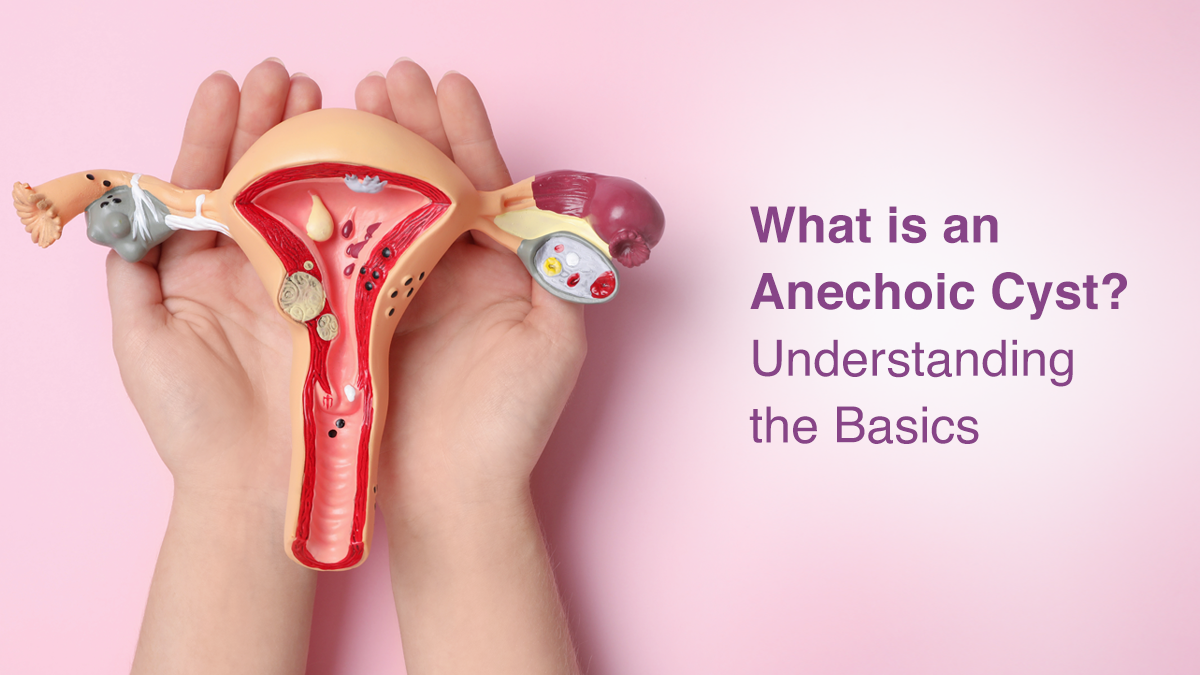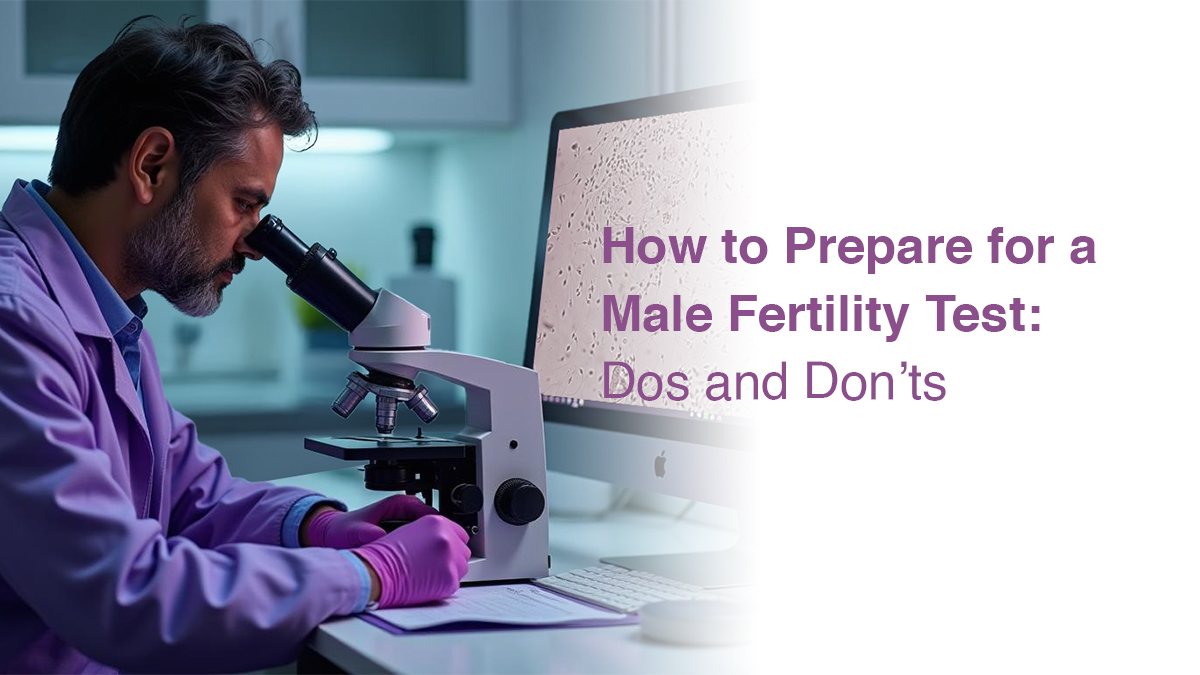
What is an Anechoic Cyst? Understanding the Basics

Anechoic cysts are generally identified through imaging, and mainly through ultrasound. Though it may sound intimidating, anechoic cysts are normally benign and often filled with fluid. It is essential to understand the causes and symptoms of anechoic cysts, as well as the treatment available, to ensure adequate healthcare management. This is pivotal for patients undergoing IVF treatment or IUI treatment.
This article looks at a detailed basic understanding of anechoic cysts, their probable effects on reproductive health, and means of management.
What is an Anechoic Cyst?
An anechoic cyst is a fluid-filled, ultrasound-black sac. “Anechoic” is a term used to describe that it does not reflect sound waves, confirming that it is a fluid-containing cyst with no solid components. Cysts like this can develop in the ovaries, kidneys, liver, and breast tissue. Most are benign lesions and do not require emergency treatment.
How Do Anechoic Cysts Appear on Ultrasound?
Ultrasound is considered one of the primary methods to detect anechoic cysts. On the scan, these cysts are displayed as dark, round, or oval structures with smooth, clearly defined edges. They contain fluid because there are no internal echoes. When the cyst contains solid areas or has irregular borders, further medical evaluation is needed to exclude other medical possibilities.
Causes of Anechoic Cysts
The causes of anechoic cysts vary depending on their location. In the ovaries, they may be associated with ovulation and appear as follicular cysts or corpus luteum cysts. Conditions like polycystic ovary syndrome (PCOS) can also lead to multiple small cysts. Simple cysts may develop in the kidneys due to ageing or genetic factors. Breast cysts often arise due to hormonal changes, while liver cysts may be congenital or incidental findings. Pregnancy-related cysts are sometimes seen in individuals undergoing IVF or IUI treatment due to hormonal stimulation.
Types of Anechoic Cysts
Here are some of the types of anechoic cysts:
- Simple cysts: Entirely fluid-filled with smooth walls and are usually benign.
- Complex cysts: Contain internal echoes or septations, requiring further assessment.
- Hemorrhagic cysts: Formed when bleeding occurs within the cyst, leading to a mixture of blood and fluid.
- Dermoid cysts: They contain a combination of solid and fluid components commonly found in the ovaries.
- Endometriomas: Caused by endometriosis, these cysts contain thick, dark fluid and may lead to discomfort.
Symptoms of Anechoic Cysts: When to Seek Medical Attention
Many anechoic cysts do not cause symptoms and are discovered incidentally during routine imaging. However, some individuals may experience:
- Pelvic pain or discomfort.
- Bloating or abdominal swelling.
- Changes in menstrual cycles.
- Pain during intercourse.
- Increased urinary urgency or pressure symptoms.
- Sudden sharp pain due to rupture or torsion.
If symptoms persist or intensify, medical evaluation is recommended.
Diagnosing an Anechoic Cyst: Imaging Techniques and Tests
Diagnosing an anechoic cyst typically begins with an ultrasound, which helps determine the cyst’s size, shape, and composition. In cases where additional clarity is needed, MRI or CT scans may be used for further evaluation. Blood tests, such as CA-125, may be conducted if malignancy is suspected. In rare instances, fluid aspiration or a biopsy may be performed for diagnostic purposes.
Are Anechoic Cysts Harmful? Understanding the Risks
Most anechoic cysts are harmless and do not pose a significant health threat. However, some may cause complications such as rupture, leading to sudden pain and internal bleeding. Ovarian cysts may twist (torsion), resulting in severe pain and the need for emergency surgery. Large cysts may press against nearby organs, causing discomfort, while in rare cases, some cysts may have malignant potential.
Treatment Options for Anechoic Cysts
The management of an anechoic cyst depends on its size, location, and symptoms. Many small, asymptomatic cysts resolve on their own without requiring treatment. Hormonal therapies, such as birth control pills, may be prescribed to regulate ovarian cyst formation. In some cases, fluid aspiration is used for diagnostic or therapeutic purposes. If a cyst is large, causes pain, or has suspicious features, laparoscopic surgery may be recommended.
How to Monitor Anechoic Cysts Over Time
Regular follow-ups are essential, particularly for those undergoing IVF or IUI treatment. Monitoring involves periodic ultrasounds to assess any changes in the cyst’s size or appearance. Blood tests may be used to check for tumour markers if there is concern about malignancy. Routine medical consultations help ensure that symptoms are managed effectively, and that treatment is adjusted as needed.
Preventing and Managing Anechoic Cysts
Although anechoic cysts cannot always be prevented, certain lifestyle measures may help in their management. Maintaining a balanced diet and a healthy weight can support hormonal stability. Regular medical check-ups and ultrasound screenings allow for early detection. Managing hormonal imbalances with medication, if necessary, can also reduce the likelihood of cyst formation. Following medical guidance during fertility treatments minimizes complications related to ovarian stimulation.
When to Consult a Doctor?
It is important to seek medical attention if an anechoic cyst causes persistent pain, rapid growth, or other concerning symptoms. Immediate medical care is needed in cases of severe abdominal pain, fever, dizziness, or sudden bloating, as these may indicate cyst rupture or torsion. Individuals undergoing IVF treatment or IUI treatment should have regular consultations with their doctor to monitor any cysts that develop during the process.
Conclusion
Anechoic cysts are commonly fluid-filled sacs detected through ultrasound imaging. While they are usually harmless, proper monitoring and medical guidance are essential, particularly for individuals undergoing IVF treatment or IUI treatment. Head over to the Oasis Fertility Clinic near you to find out more. For quick support, you may also use our live chat feature or give us a call on 1800-3001-1000.
FAQs on Anechoic Cysts
1) Can an anechoic cyst become cancerous?
Most anechoic cysts are benign, but complex or irregular cysts may require further evaluation.
2) What happens if an anechoic cyst is left untreated?
Small, simple cysts often resolve on their own, but larger cysts may cause pain or complications.
3) Can an anechoic cyst be prevented?
While not entirely preventable, maintaining hormonal balance and regular medical check-ups can help in early detection and management.


fill up the form to get a
Free Consultation
Avail 0% interest on EMI
All Procedures | No Upper Limit
How we reviewed this article:
- Current Version





